A new exhibition uses 15 conventional and emerging media to depict the story of man's closeness and eventual drifting away from nature, with the hope of rekindling the bond
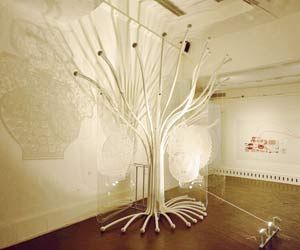
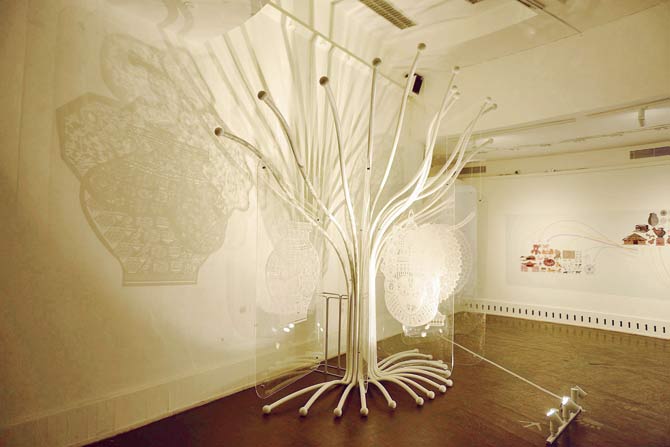
On a Wednesday afternoon, cars honking through the boulevards of Fort paint the very picture Dr Ajanta Sen evokes when she speaks of the relationship of urban India with nature. "We are inspired by it, and yet, treat it so harshly," she confides. At one such verdant junction stands the National Gallery of Modern Art, which is exhibiting the result of 18 months of research that she undertook with Prof Ravi Poovaiah of the Industrial Design Centre, IIT Bombay. Called Nature Embedded: A Design Technology Experience, the exhibition curated by Dr Sen, founder of Design in India, a resource site for the design community in India, uses 15 different media that pay tribute to nature through design.
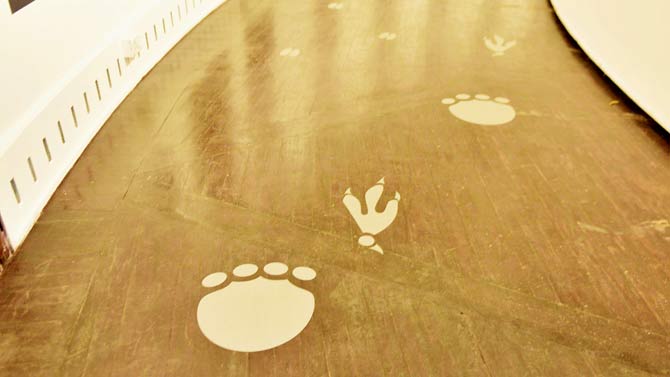
"The theme emerged from the idea that we take nature for granted, as a ubiquitous part of our life. But in parts of the world, such as in the post-Industrial Revolution West, nature got completely dis-embedded. And then you have rural India, parts of Africa, east Europe, New Zealand, where nature remains an everyday inspiration," says Dr Sen, adding, "All of design has developed out loving and emulating nature. And through the exhibition, we hope to re-embed nature in man's life."
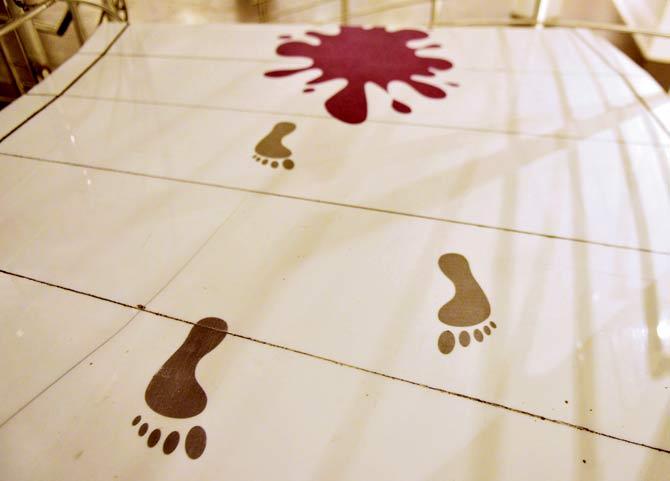
As we walk through the exhibition spread across five levels of the NGMA, the intersections of man with nature emerge through calligraphy, photography, cartoons, tessellated murals, product installations, as well as emerging media involving infographics, holograms, interactive projections and augmented reality that enable the viewer to engage with the exhibits. Here's how the nature-man intersection unfolded:
Till: March 3, 11 am to 6 pm
At: NGMA, Fort.
Call: 22881969
Entry charge: Rs 20
Once upon a harmony
The exhibition starts with the Memories of Nature section, which goes back to the time when man's life was built around nature's ways by following its rhythms, tapping into natural resources, and emulating nature's designs. Two large installations called the Book of Life and Tree of Life (in pic) bear testimony to this organic relationship, with the branches of the tree showcasing nature-inspired designs on early coins and ornaments among other elements.
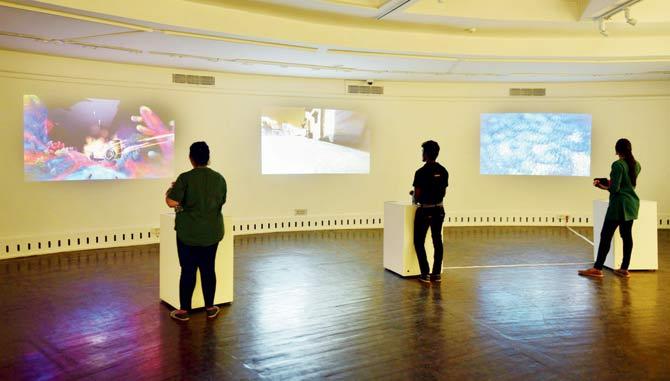
Footprints of time
Floor graphics on the ground level and flights of stairs leading up to level two weave a stirring tale of the human-nature interaction. The first stretch depicts pugmarks belonging to different animals, which are later joined by human footprints. The two continue walking together until a big red splash, symbolic of human greed, after which it's just the footprints that remain.
Satirically sustainable
The first level showcases two forms of conventional media. So Tweet the Earth is a set of cartoons drawn from an international design competition on water, hosted by IIT Bombay in 2015. The section uses the social media idiom of communication and infuses it with humour to parody man's neglect of nature. Photographs of nature by Kolkata-based cardiologist Dr Debal Sen, who refrains from touching up his pictures, represent the other medium. The same section offers the possibility of augmented reality that adds a touch of motion to the images.
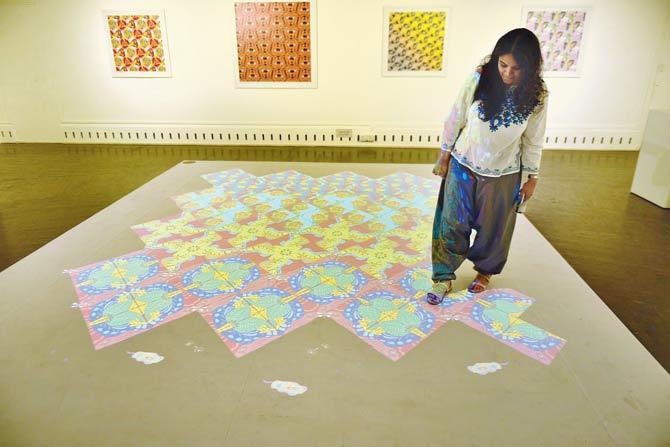
Involving the viewer
Apart from interactive media, the exhibition has an interesting provision for including the viewer in the proceedings. A giant kaleidoscope captures live movements of the viewers through a 360-degree responsive projection along with the surrounding images within the museum captured by a robotic camera. The images are then processed and projected onto the dome of the museum in the form of kaleidoscopic images. "The idea was to create a real-time sense of the dynamics generated within the museum as visitors come and go. The varying footfalls can generate variable imaging," shares Dr Sen,
Beyond humans
This is the section which instantly draws curious viewers to animal-shaped joysticks. With an aim to give humans a glimpse into how other creatures cohabit the earth, the interactive projections show life in water, the sky and on land through the points of view of a fish, dog and bird. Life-like animation takes the viewer through the bounties of nature from unexplored angles, while subtle elements like smoke emanating from an industrial area or a tyre at the bottom of the sea mirror man's reckless actions. One level up, a tessellated, interactive floor gives a brilliant peek into how human evolution roots back to sea sponges.
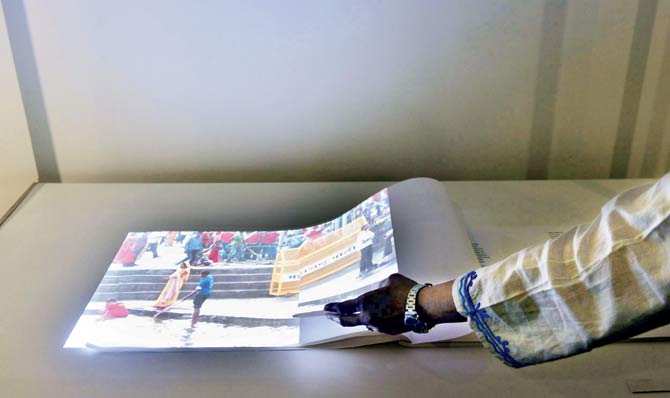
Footprints of time
Floor graphics on the ground level and flights of stairs leading up to level two weave a stirring tale of the human-nature interaction. The first stretch depicts pugmarks belonging to different animals, which are later joined by human footprints. The two continue walking together until a big red splash, symbolic of human greed, after which it's just the footprints that remain.
Satirically sustainable
The first level showcases two forms of conventional media. So Tweet the Earth is a set of cartoons drawn from an international design competition on water, hosted by IIT Bombay in 2015. The section uses the social media idiom of communication and infuses it with humour to parody man's neglect of nature. Photographs of nature by Kolkata-based cardiologist Dr Debal Sen, who refrains from touching up his pictures, represent the other medium. The same section offers the possibility of augmented reality that adds a touch of motion to the images.
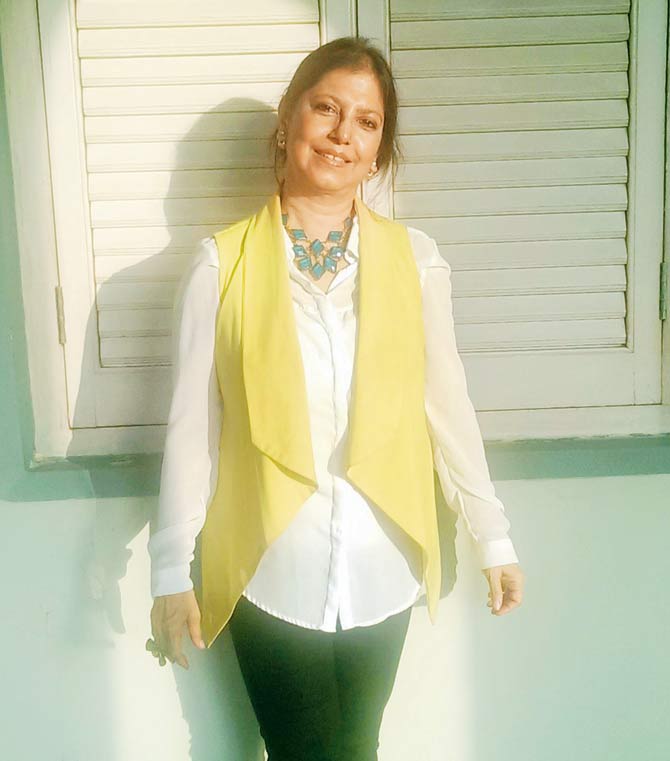
Dr Ajanta Sen
Interactive ethnography
The Kumbh Mela, included by the UNESCO in its inscribed Representative List of Intangible Cultural Heritage of Humanity in December last year, is presented as a fascinating example of a nature-culture intersection with all four cities hosting the congregation situated by the banks of holy rivers. With ethnographic studies conducted during the most recent Kumbh Melas held in Allahabad, Nashik and Ujjain, the footage that emerged during research is projected onto a book with reflections on the mela on the facing page.
Once upon a harmony
The exhibition starts with the Memories of Nature section, which goes back to the time when man's life was built around nature's ways by following its rhythms, tapping into natural resources, and emulating nature's designs. Two large installations called the Book of Life and Tree of Life (in pic) bear testimony to this organic relationship, with the branches of the tree showcasing nature-inspired designs on early coins and ornaments among other elements.
 Subscribe today by clicking the link and stay updated with the latest news!" Click here!
Subscribe today by clicking the link and stay updated with the latest news!" Click here!









